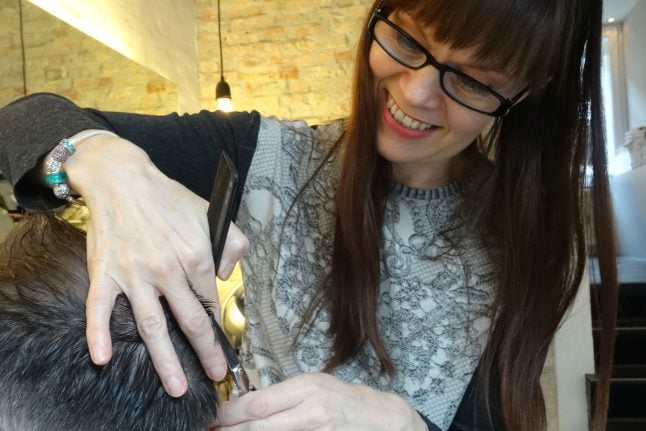Sharon Hatting moved to Copenhagen from the UK in 2013 with her Danish partner and five year old daughter, without speaking Danish or knowing anyone here apart from her partner’s family. They had spent two years planning the move and, whilst she was excited about the changes, it was daunting at first.
Four years later, Hatting has a successful freelance hairdressing business and recently started to rent a space in an exciting salon, Hair by Dunja, in the trendy Vesterbro area of the city.
Hatting is an experienced hairdresser and make up artist who had spent time building up a freelance hairdressing business in the UK after working in a large hair salon for five years. Her career had been marked by hard work, something she says was key in helping her settle in to Danish life and launch her business here.
“I arrived with no Danish language skills and immediately enrolled in one of the large language schools in Copenhagen. I wanted to learn the language to a high level so took two years to finish my studies. During the second year of studying Danish I started to establish myself as a freelance, mobile hairdresser,” she said.
“This was a concept that was relatively unknown in Denmark so not only did I have limited networks, I was also having to sell a new way of hairdressing. I looked around at where I could begin to network and gain customers. The obvious places were my daughter’s Danish school, my language school and Facebook.
“When I had a new client I asked them, if they were happy with my services, to pass my name onto other people they knew.
“It takes a lot of courage to start to build these networks from scratch and put yourself out there but I stuck with it, no matter how challenging it felt at times. I started to see people recommending me on Facebook and this led to more new customers.”
As time went on, Hatting worked part time in a small local hair salon and continued to build her freelance business.
Photo: Melanie Haynes
“Working in the salon pushed me to speak Danish with customers and I realised that, although I had passed my Danish exams, I was still learning all the time. Working in a language which isn't your own is a constant challenge but I pushed myself out of my comfort zone.
READ ALSO: 13 signs that you'll never master Danish
“I love living and working in Copenhagen but it has taken me time to adapt. Learning the language went a long way to making me feel at home here. As with many expats I found the work-life balance here to be a refreshing change from the UK. I worked hard at my job and building my business but it is expected that people want to spend time with their families and have time to recharge.”
Like many self-employed business owners in Denmark, Hatting was able to access free business support, in her case through the business centre in Islands Brygge, which she was introduced to through a careers day organised by her language school. With a tax regime which was new to her, Hatting also sought advice from Danish tax authority Skat, whom she found very helpful.
In September 2017, Hatting started renting a stall or chair in a salon, Hair by Dunja, close to the new Carlsberg Byen in Vesterbro.
“This is a great opportunity for me to reach more people. I have built a strong network of customers, many of whom are delighted to come to me in my new location,” she said.
“I really believe that you can only improve and get better at what you do by pushing your boundaries and learning new things. It isn’t always easy and it takes time to really establish yourself in a new country. But I think we, as expats, need to be a little patient with ourselves and take things in our stride. Language, networks and really finding your way takes time but self belief is a powerful thing,” she said.
“I try not to put limitations on myself. Danish was the first language I had ever really tried to learn, if you ignore a few years of school level French, and I managed it. I conquered my fears and it all paid off in the end. It would be a lie to say it has all been easy but having the focus of building a successful business has pushed me forward.”
“Some weeks feel harder than others. But by taking a day for myself and spending quality time with my family, I see the beauty of the city and think how lucky I am to live here. For me that is what it is all for.”
READ ALSO: 'I was fired from my first Danish job after nine days'



 Please whitelist us to continue reading.
Please whitelist us to continue reading.